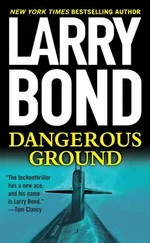“Even large surface ships will be affected by these conditions. Nothing’s flying. Search-and-rescue operations are out of the question until the winds and sea states moderate in two, possibly three more days. And then there is the sea ice, which is getting thicker in the area near the reported position.”
Joanna Patterson shuddered, remembering the water temperature on her own trip north. The interior of the sub was comfortable enough, but brushing up against any metal in contact with the hull had reminded her of the frigid wilderness inches away.
The intelligence analyst was the most interesting, a fiftyish academic named Russo, with thinning hair and a limp. A former submariner, he knew his topic. The problem was that he loved his topic. His opening slide told them that his three-part briefing would review past and present Soviet and Russian submarine rescue platforms, then Russian submarine incidents and their successes or failures in rescuing downed crews, and he planned to wind up with a review of Russian-Western cooperative agreements.
Gosport interrupted him. “Which of your slides covers their current capabilities?”
Disappointed, the analyst flipped forward to a slide titled “Northern Fleet Rescue Assets.” It was brutally short. One slide showed a photo of the Mikhail Rudnitskiy salvage and rescue ship, and the second a picture of an AS-34 Priz-class rescue submersible, built in 1991, and in “doubtful” mechanical condition.
“That’s it?” Gosport asked, incredulous.
“Russian submarines themselves are very survivable. They use a double hull design with internal compartmentation, which gives them very large reserve buoyancy. All of the attack submarines also have an internal escape chamber big enough to hold the entire crew.” He flipped to a cutaway of a Russian nuclear attack sub, then pointed to a cylinder embedded in the sail. “There it is, equipped with medical supplies, food and water, and emergency radio equipment.”
“But they haven’t used it,” General Winters, the vice chairman, observed.
“We don’t know for sure, sir. But it’s likely they haven’t.” The analyst was on familiar ground, and confidence buttressed his arguments. “For the Russians to declare a missing submarine alert means that it has failed to report in during a routine communications window, that it has not signaled in some other way, and repeated attempts to contact it have all been unsuccessful.”
Gosport took over again. “Thank you, Dr. Russo. Does anyone have other information to contribute?”
Sotera, the navy representative, volunteered, “We ordered Mystic to prep for movement two hours ago. She’s on twenty-four-hour notice, so she can be flown from San Diego early tomorrow, if we want to use her. The two Super Scorpio ROVs are already loaded on C-17s and are on strip alert. We’ve also detached USS Churchill from Standing Naval Force Atlantic. They’re near Norway. She’ll steam north, and we’ll fly the repair parts Seawolf requested out to her. When she delivers the parts to Seawolf she’ll also take off her casualties.”
“Was that wise?” Abrams, the State Department official, asked. “What if Churchill encounters Russian naval vessels while searching for the sub?”
“It’s international waters,” the admiral replied, “and we’ve ‘encountered’ Russian units before.” He wanted to say more, but Gosport kept things moving.
“We have several questions to be answered. I’ll address them in order of their urgency. First, do we pass Seawolf’s information on to the Russians?”
“We haven’t?” exclaimed Sotera. Several at the table were more than surprised. “It’s all over CNN.”
“The news reports are vague,” Abrams countered. “They confirm a Russian submarine emergency, but only hint that a U.S. sub may have been involved. To my knowledge, nobody at the State Department has had any official or unofficial communication with any Russian national in any capacity.”
“Mr. Abrams is correct,” Gosport added. “The United States has not officially provided the time and location of the collision to Russia. Until we do, the news reports can be dismissed as speculation. Once we do give Russia the data, we confirm our presence in the area and more importantly, our part in the collision.”
“They’ll blame us,” Abrams stated.
“Of course. Nothing new there,” Winters replied. “But from Rudel’s report, it sounds like he was doing his level best to avoid a collision.”
“Didn’t do a very good job,” muttered Bronson, the DoD counsel. “I’m assuming we don’t put incompetents in command of nuclear submarines, but couldn’t Rudel have simply moved away from the other submarine?”
Gosport looked to Richardson for an answer. The captain explained, “The Russian was trying to drive Seawolf out of the area by making passes very close to her. Both navies have used the tactic in different times and places to make the other side feel ‘unwelcome.’ It’s a risky business. There have been collisions between U.S. and Russian boats before, although never one this severe. In none of those cases was the U.S. captain held culpable.” The last sentence was directed straight at the counsel.
Bronson nodded and made a notation. “Still, what do we know about this man? He’s screwed up this mission. What if he makes a hash of finding the Russian sub?”
Richardson bristled. “He didn’t fail at anything, sir. Seawolf’s survey was interrupted by the Russian. That’s certainly not his fault.”
“I’ve met Captain Rudel.” Patterson spoke up. She had to make Tom Rudel real to these people. “My husband served with him when they were both lieutenants. He’s an excellent officer, intelligent and a good leader.”
“Dr. Patterson, did you have a technological insight into this situation?” Branson’s attitude was almost hostile.
Patterson wasn’t deflected by his snide comment. “The two nuclear subs involved are over three hundred feet long and displace almost ten thousand tons. Depending on their speed, it can take three to four boat lengths to change course. Given a noncooperative partner, maneuvering in close proximity, collisions are more than likely.”
Sotera, the vice CNO, reminded the group, “Rudel’s competence, or responsibility for the collision, doesn’t affect the basic fact that we know where the Russian sub is.”
“Where it may be,” corrected Abrams.
“Where it probably is,” countered the admiral. “This is a search-and-rescue mission. Not sharing what we know borders on the criminal. Furthermore, need I remind everyone here that we supported the Russians in August 2005 when the AS-28 got tangled in fishing nets off the Kamchatka Peninsula. And they were participants in this year’s NATO Bold Monarch submarine rescue exercise in May.”
Gosport’s expression showed that she wasn’t pleased at the admiral’s inference. “Until we know what the effects will be, sharing the information would seem unwise.”
“There’s no rush,” Abrams suggested. “The weather’s rotten and will be for two or three more days. Let Seawolf investigate and we can pass the information on if there’s anyone to rescue.”
“Unsatisfactory,” Sotera answered firmly. “Just like us, the Russians need time to prepare assets and equipment, and knowing where to look means they can start moving it now. And what if the weather breaks sooner than predicted?”
Bronson added, “The legal implications are fairly clear. Even if the Russian was totally responsible for the collision, withholding the information would have a very adverse effect on our position. And the Admiral is correct: We have included the Russians in rescue exercises as well as participating in the international submarine rescue liaison office. The course of action the State Department is recommending is completely counter to the president’s present policy.”
Читать дальше












